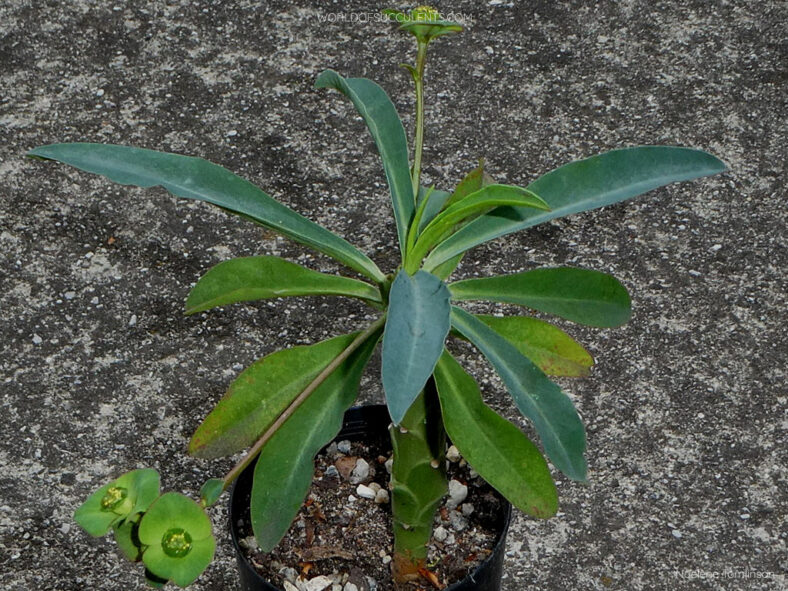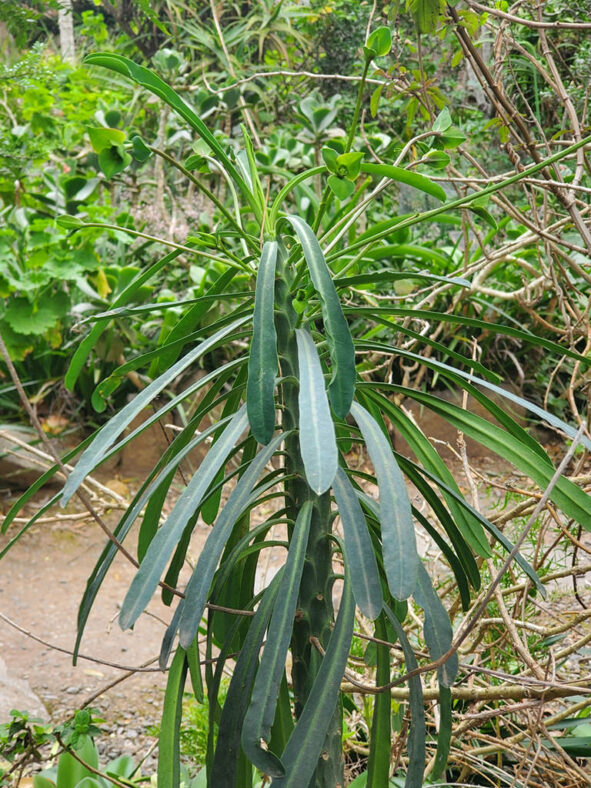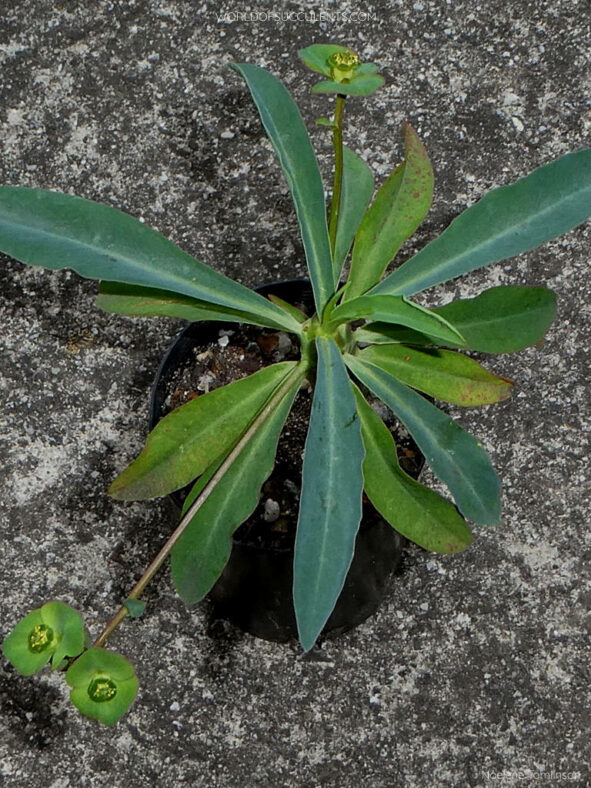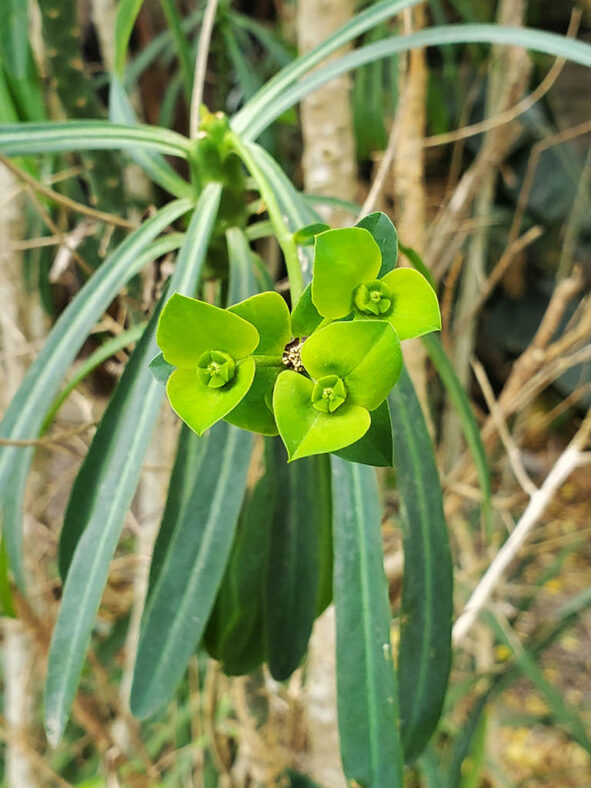Euphorbia bubalina was first described by Pierre Edmond Boissier (1810-1885) and published in his Centuria Euphorbiarum in 1860.
Scientific Name
Euphorbia bubalina Boiss.
Common Name(s)
Buffalo Euphorbia
Synonym(s)
Euphorbia laxiflora, Euphorbia tugelensis
Scientific Classification
Family: Euphorbiaceae
Subfamily: Euphorbioideae
Tribe: Euphorbieae
Subtribe: Euphorbiinae
Genus: Euphorbia
Etymology
The specific epithet "bubalina" (pronounced bub-uh-LEE-nuh) refers to the Buffalo River in the Eastern Cape province of South Africa, where this species was first discovered.
Origin
Euphorbia bubalina is native to South Africa. It occurs in the Eastern Cape and possibly KwaZulu-Natal province.
Description
Euphorbia bubalina is a succulent shrub with cylindrical, slightly tuberculated branches that bear smooth, green leaves. It can grow up to 5 feet (1.5 m) tall. The leaves are lance-shaped, spreading, and scattered along the young branches, measuring up to 6 inches (15 cm) long and 1.3 inches (3.3 cm) wide.
During the summer, Euphorbia bubalina produces cyathia enclosed with a pair or a whorl of three green bracts, usually edged with red. The cyathia appear on solitary peduncles that can reach lengths of 6 inches (15 cm). The peduncles dry and persist on the branches for 2 or 3 years. The fruits are green five-locular capsules.

How to Grow and Care for Euphorbia bubalina
Light: For optimal growth, your Euphorbia bubaline needs plenty of sunlight. Place it near a sunny window or move it to your balcony or garden during the warmer months, gradually increasing sun exposure to avoid sunburn.
Soil: Use a well-draining soil, either a commercial potting mix formulated for succulents or create your own well-draining soil.
Temperature: While high summer temperatures are not a problem, low winter temperatures can damage or kill your plant. Euphorbia bubalina grows best in USDA Plant Hardiness Zones 10a to 11b, with average minimum winter temperatures ranging from 30 to 50 °F (-1.1 to 10 °C).
Watering: From spring to fall, water the plant when the soil's top inch (2.5 cm) feels dry. Reduce watering in winter and give it just enough water to prevent wilting. In the warm season, evening is the best time of the day for watering.
Fertilizing: To ensure the potted plant receives sufficient nutrients, apply a balanced fertilizer in a 10-10-10 NPK formulation, diluted to 1/4 strength weekly during the growing season.
Repotting: Although your Euphorbia bubalina does not need to be repotted often, it will benefit from repotting when it outgrows its pot. Repotting is best done in early spring at the beginning of the growing season. When handling this plant, wear gloves, protective clothing, and appropriate eye protection.
Propagation: The easiest and quickest way to propagate this plant is by stem cuttings. Although it can be started from seeds, it can be difficult for them to germinate. Take cuttings during the growing season; spring is the best time to sow seeds.
Learn more at How to Grow and Care for Euphorbia.
Toxicity of Euphorbia bubalina
Euphorbia bubalina produces a poisonous white milky sap that may cause burns or irritation if it comes into contact with the skin or eyes. Therefore, it is best to keep this plant away from children and pets.
Links
- Back to genus Euphorbia
- Succupedia: Browse succulents by Scientific Name, Common Name, Genus, Family, USDA Hardiness Zone, Origin, or cacti by Genus
Photo Gallery
Click on a photo to see a larger version.


